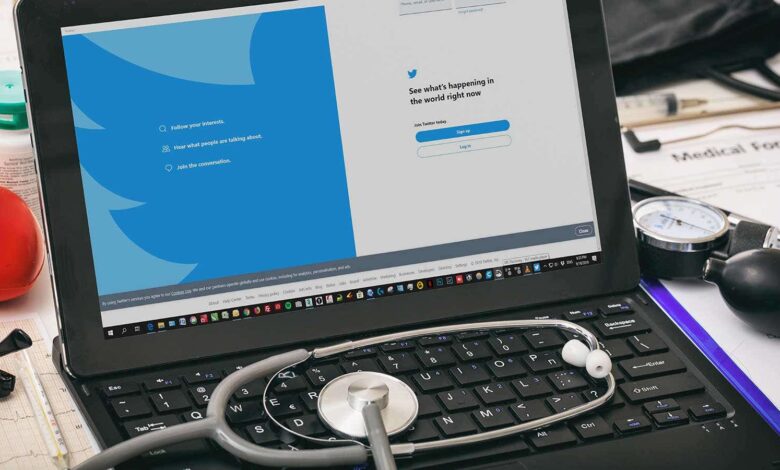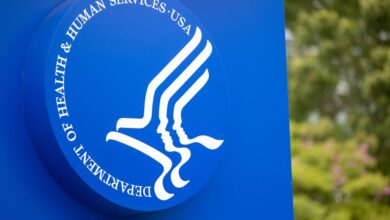Social Media Physician Endorsements Raise Prickly Ethical Questions

—
Just 28 physicians who endorsed products made $1.5 million
by
Sophie Putka,
Enterprise & Investigative Writer, MedPage Today
May 30, 2024
In 2022, 28 U.S. physicians endorsing drugs or devices on X (previously Twitter) made nearly $1.5 million from companies who make these products, a cross-sectional study found.
Of these social media endorsers, 26 (93%) received payments from the endorsed product’s manufacturer, totaling $713,976 (mean $27,461), and 24 (86%) received payments related to the endorsed drug or device, totaling $492,098 (mean $19,684), Aaron Mitchell, MD, MPH, of Memorial Sloan Kettering Cancer Center in New York City, and colleagues reported in a research letter in JAMA.
Of these specific drug and device-related payments, the greatest amount paid was categorized as for “speaking” or “consulting.” Most of the promotions, 17 (61%), were sponsored physician testimonials, and eight of these, which Mitchell said were posted by industry as opposed to physicians themselves, had no disclosure of compensation.
“On some of these videos … with a physician talking about the drug, some of them just weren’t disclosed, which seems to be a kind of violation of, not law, but of just best practices on the part of the manufacturer or on the part of a physician,” Mitchell told MedPage Today.
“I think that there’s a difference between developing a drug scientifically [or] promoting a drug because you believe it, versus promoting a drug because you’ve entered into a contractual arrangement in agreement to be an endorser of that product,” he added.
As social media has overtaken other modes of marketing communications, drug and device manufacturers have adapted, leveraging influencers with large followings and trusted experts, such as physicians, to relay their messaging.
Under updated guidelines from the Federal Trade Commission, which also regulates drug advertising on television, when a physician is paid to post about a product on social media, “consumers might not expect that the physician was compensated and might be more likely than in a television ad to expect that the physician is expressing an independent, professional opinion. Accordingly, the post should clearly and conspicuously disclose the doctor’s connection with the company.”
For TV ads, however, they specify that a consumer would reasonably assume an expert endorser in the ad was compensated. A company must only disclose the relationship if the physician will receive a percentage of gross sales or owns part of the company. They do not draw a distinction, however, between these ads and social media posts from industry that include expert endorsers, as opposed to from physician endorsers themselves.
“It is already known that many physicians receive money from industry and a significant chunk of it is dedicated to peer-to-peer education/marketing. It’s an incredibly effective strategy,” Andrew Foy, MD, of the Penn State Milton S. Hershey Medical Center in Hershey, Pennsylvania, who was not involved in the study, said to MedPage Today in an email, adding that it was unclear to him exactly what constituted an “endorsement.” He noted that “X provides one venue for this but there are many others, as the authors acknowledge.”
“At this moment in time, the profession seems only interested in transparency,” Foy added. “As if someone cannot be transparent about their conflicts and highly biased at the same time.”
However, Adriane Fugh-Berman, MD, director of PharmedOut, a project at Georgetown University Medical Center that educates medical professionals about industry marketing practices, told MedPage Today in an email that it’s “surprising that some physicians are comfortable with a role more commonly associated with drug reps than healthcare providers.”
“Regulation of social media lags behind regulation of advertising and other forms of promotion,” Fugh-Berman added.
The researchers searched X for a broad set of terms related to pharmaceutical marketing, along with the names of all drugs first approved in 2021 and 2022. Using “adaptive” searching to add key words, they identified physician endorsements of drugs and medical devices in 2022. Endorsements had both the name of the product and manufacturer in them, and included industry-sponsored testimonials, posts, white papers, or webinars.
These endorsements were included if they were part of a marketing campaign (as opposed to just expressing a favorable opinion about a certain product), came from physician and industry accounts, and were related to products that were explicitly named or implied. Industry employees and non-U.S. physicians were excluded. Researchers recorded each physician’s H-index, with a score over 20 regarded as “accomplished.”
Physicians identified were manually linked to the CMS’s Open Payments, which tracks research and general payments to physicians from companies. Their total payments from all companies, payments from manufacturers of endorsed products, and payments from manufacturers related to the specific product endorsed were measured. These payments were compared to a specialty-weighted mean of industry payments received by all physicians in 2022.
The top two companies manufacturing endorsed products were Boston Scientific, with 15 promotions (54%), and GlaxoSmithKline, with 6 (21%). Eisai, Exelixis, AstraZeneca, Novartis, and Pfizer had two or fewer physician promotions.
Of the 28 physicians included, 21 specialized in urology, medical oncology, or radiation oncology (75%). The median H-index was 15, and most (68%) had an H-index less than 20. Fourteen (50%) had no publications related to the endorsed product.
A disclosure of compensation included labels such as “sponsored post,” a link to a page that disclosed compensation, or disclosure in a video, among other language.
Study limitations include a small sample size, use of only one social media site, potential incomplete capture of endorsements, and a search strategy for specific drugs but not devices. There was also uncertainty regarding whether payments identified on Open Payments were specifically endorsement related. For example, a sum payment to a physician from a manufacturer related to a specific product could have included the payment for a sponsored X post, in addition to other speaking fees related to that product.
-
![author['full_name']](https://clf1.medpagetoday.com/media/images/author/Putka_Resize_96.jpg)
Sophie Putka is an enterprise and investigative writer for MedPage Today. Her work has appeared in the Wall Street Journal, Discover, Business Insider, Inverse, Cannabis Wire, and more. She joined MedPage Today in August of 2021. Follow
Disclosures
The study was funded by grants from the National Cancer Institute.
Persaud and Mitchell reported no conflicts of interest.
Co-authors reported financial relationships with Pfizer, Sanofi, Janssen, the National Institute on Aging, the American Heart Association, the American College of Cardiology, the American Medical Student Association, and being associate editor of JAMA Internal Medicine.
Fugh-Berman reported being a paid expert witness in litigation regarding pharmaceutical and medical device marketing practices.
Foy reported no conflicts of interest.
Primary Source
JAMA
Source Reference: Persaud S, et al “Industry payments to physicians endorsing drugs and devices on a social media platform” JAMA 2024; DOI: 10.1001/jama.2024.7832.


